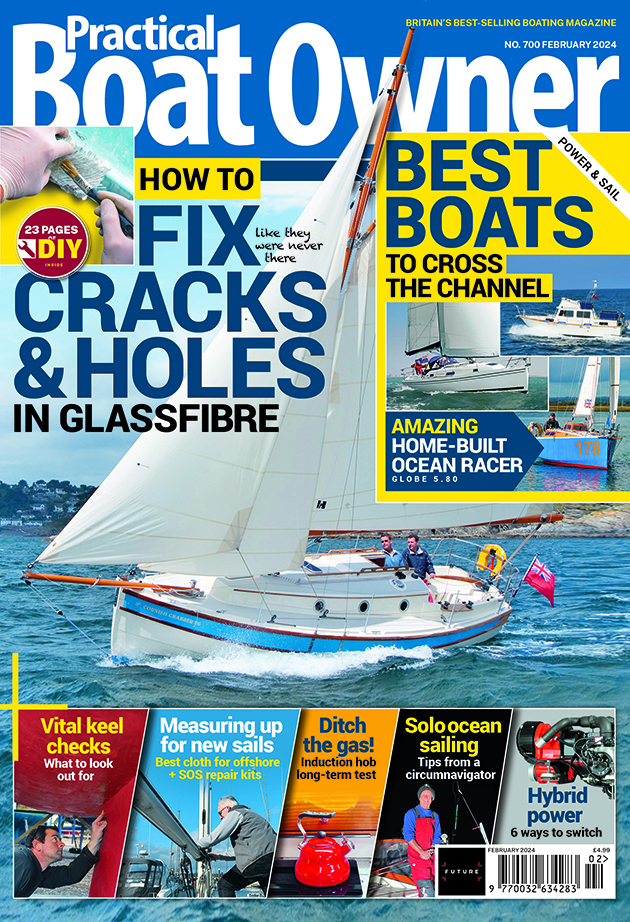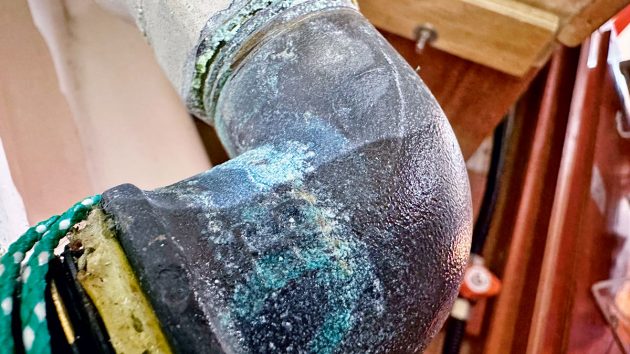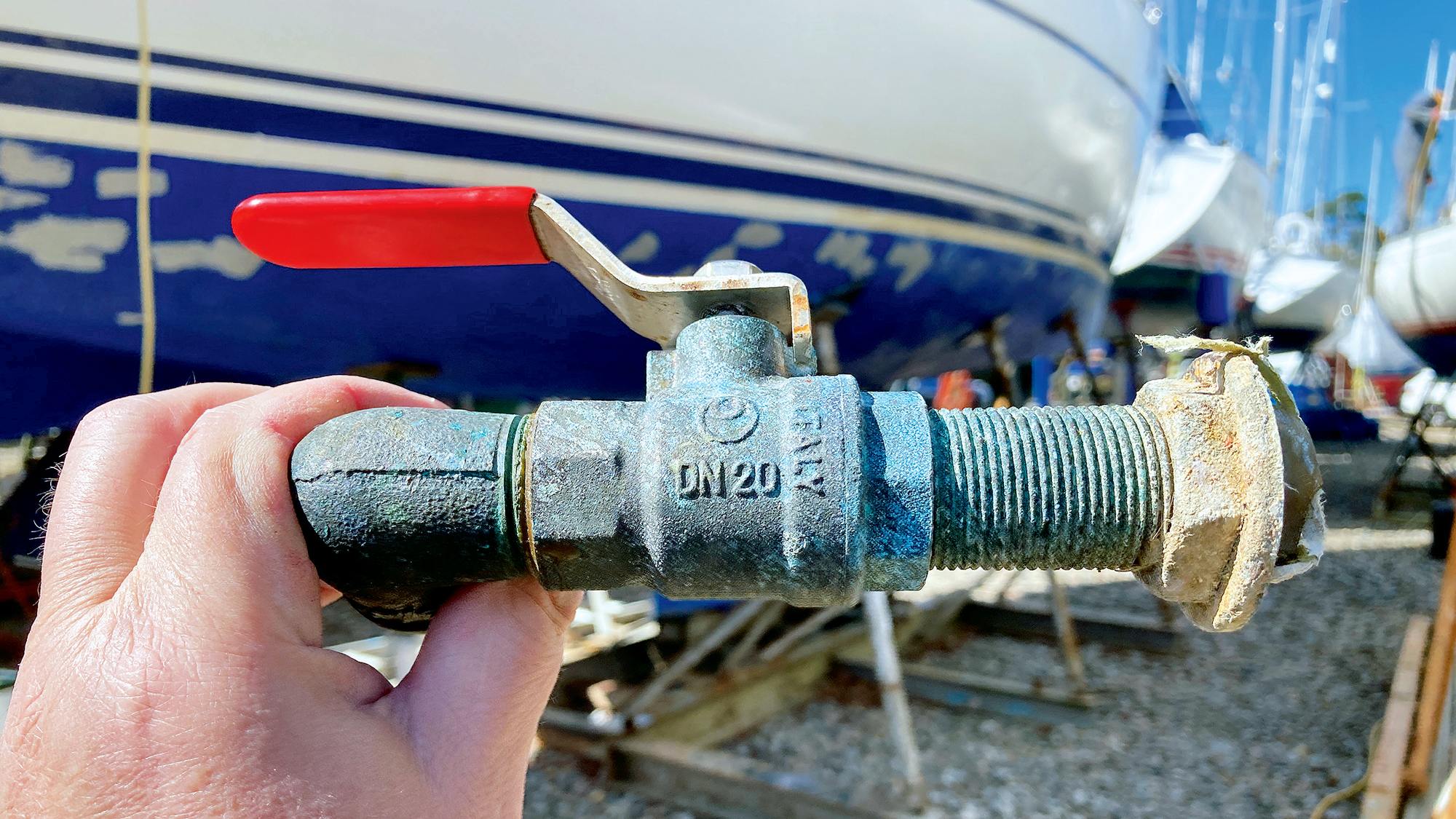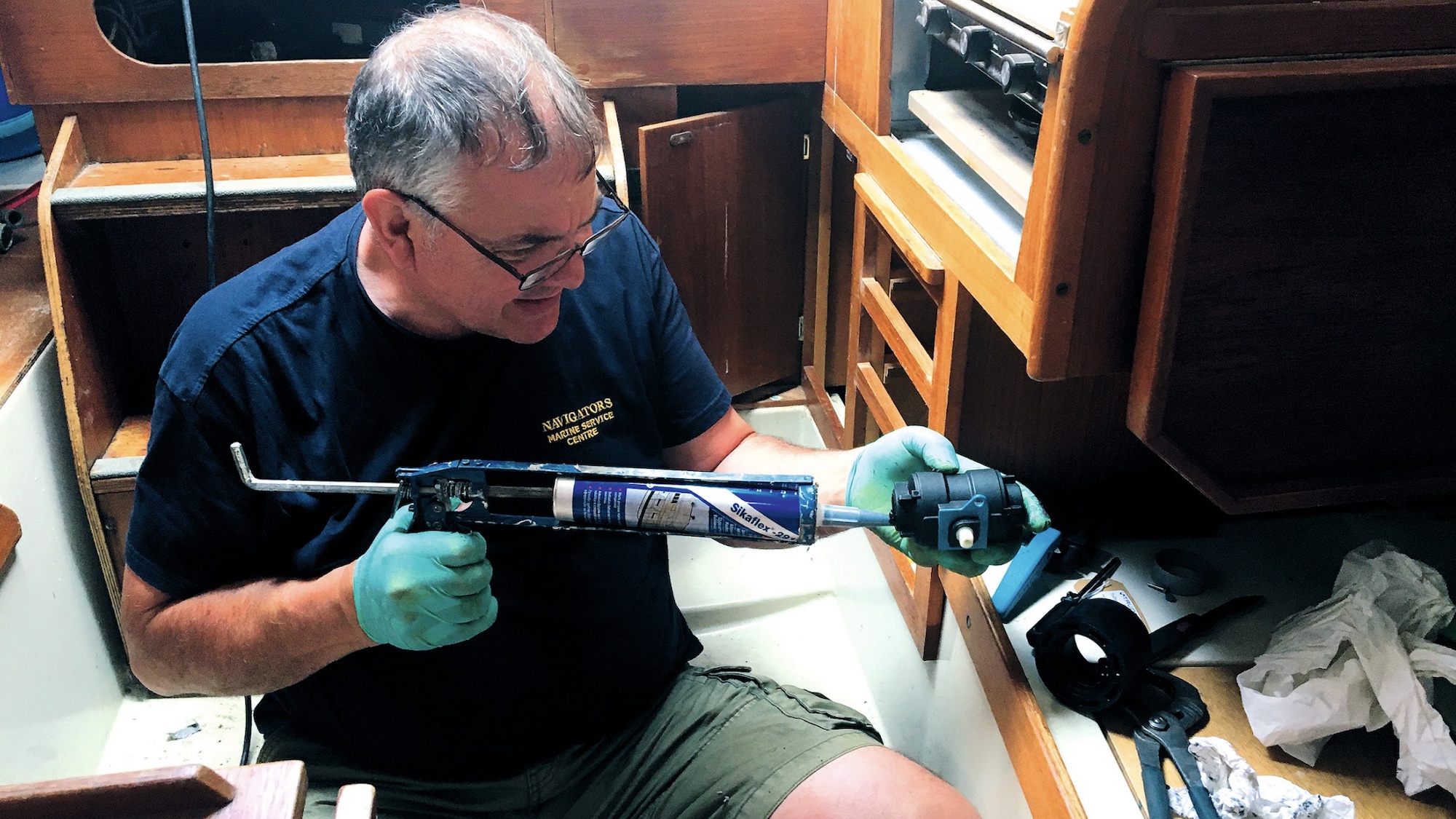PBO reader Camilla Ransom has found a "strange film" on one of the boat's seacocks. What should she do? Surveyor Colin Brown has the answer
I am a long-time reader of Practical Boat Owner magazine and I recently discovered a strange ‘film’ on one of my boat’s seacocks and tried to find out online what it is and what can be done about it.
But I’ve found so much conflicting advice I think I need to reach out to an expert.
We recently had our seacocks serviced and we suspect they’ve changed the ball valve which has the marking TS EN 13547 on the side.
The skin fitting and elbow are original (circa. 2002) and have no markings.
We’re not in a position to haul out to replace them for a few months, so if it is galvanic corrosion are any short-term things we can do to stop it from worsening?
Camilla Ransom
Colin Brown replies:
It’s hard to be certain from photos but it looks like there is a water leak between the elbow and the body of the valve rather than galvanic corrosion.
These joints can be hard to seal as there are no mating faces to make a seal just the threads and you can’t always tighten the threads as much as you’d like because the valve handle has to be in the right place.
The greenish crusting you can see is salt from evaporating sea water with some copper content which has leached out from one or other of the components.
There is also some visible deterioration of the chrome plating on the valve body.
High-quality valves tend not to be chrome plated so this may be a brass valve.
It’s very difficult to rectify this sort of leak without dismantling and adding more sealant to the threads so you may have to live with it until you haul out.
Pour hot fresh water over the affected area and give it a good scrub with a plastic scrubbing brush.
If you find any pink-looking metal then you should change that out as a matter of priority.
It’s impossible to tell which alloys have been used in many valves, skin fittings, elbows and the like.
The best you can do is try to buy from a supplier you trust and choose DZR brass as a minimum and bronze if it is available.
These may not be kept in stock but it’s worth waiting to get the better quality materials.
TS EN 13547 is an old standard for copper alloy ball valves and does not give information on the composition of any specific valve.
I’d consider it good practice to replace all parts of through-hull fittings when one part becomes due for replacement.
The risk of failure is high relative to the cost of the materials.
Continues below…
Skin fittings and seacocks explained
Surveyor Nick Vass examines the different types of skin fittings and seacocks on the market and shares advice on how…
Dezincification resistant (DZR) skin fittings explained
Vyv Cox busts the myths surrounding the use of dezincification resistant (DZR) seacock materials.
Fitting new seacocks and skin fittings on the PBO Project Boat
Maximus, our PBO Project Boat, had four seacock fittings that need changing – three ball valves in the forepeak (1…
Maintenance on a boat: 71-point skipper’s checklist
Make sure your boat is ready to go back in the water with Practical Boat Owner's comprehensive guide
Enjoyed reading Why is there a film on the seacocks?? 
A subscription to Practical Boat Owner magazine costs around 40% less than the cover price.
Print and digital editions are available through Magazines Direct – where you can also find the latest deals.
PBO is packed with information to help you get the most from boat ownership – whether sail or power.
-
-
-
- Take your DIY skills to the next level with trusted advice on boat maintenance and repairs
- Impartial in-depth gear reviews
- Practical cruising tips for making the most of your time afloat
-
-
Follow us on Facebook, Instagram, TikTok and Twitter








